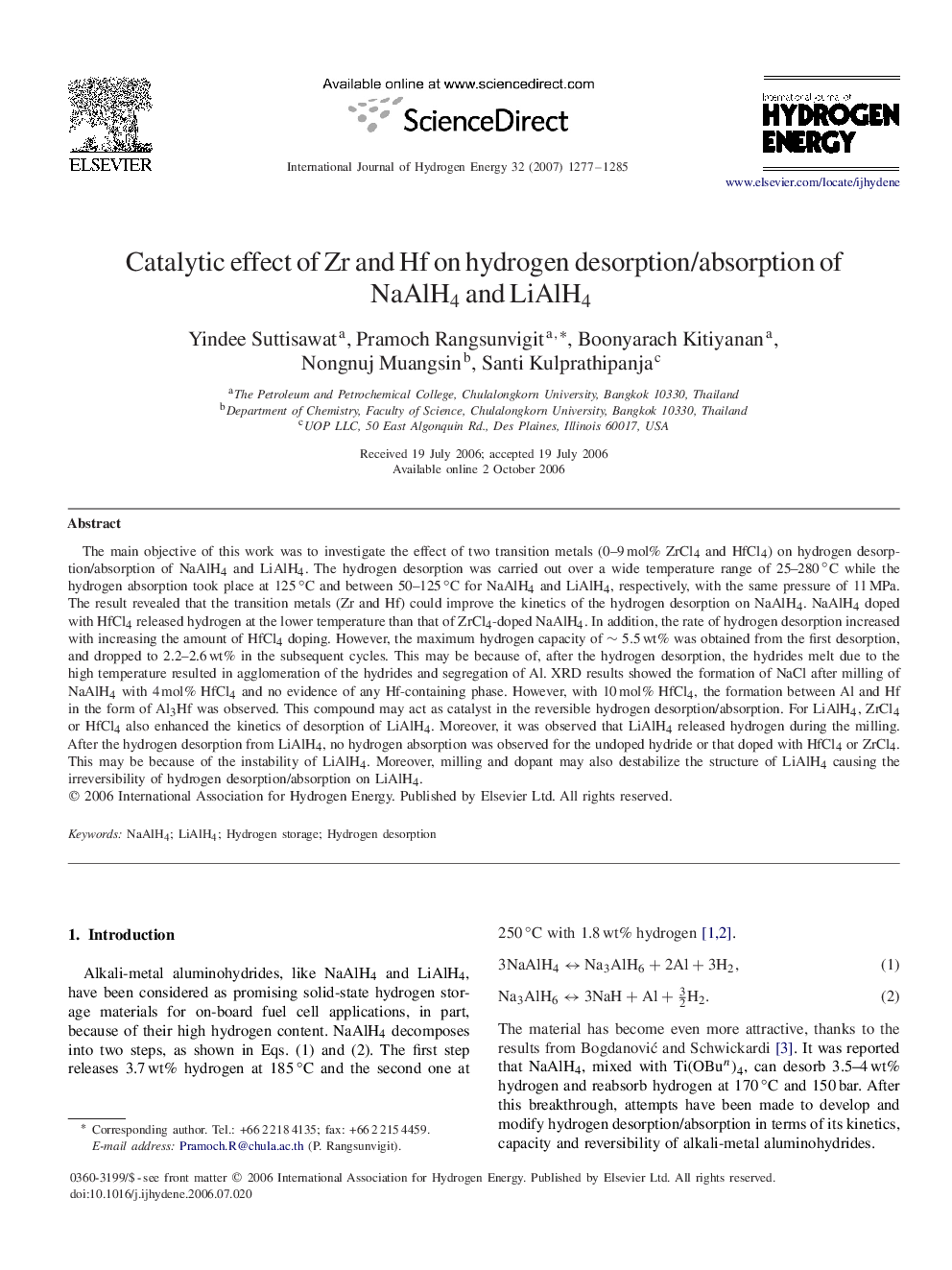| Article ID | Journal | Published Year | Pages | File Type |
|---|---|---|---|---|
| 1275163 | International Journal of Hydrogen Energy | 2007 | 9 Pages |
The main objective of this work was to investigate the effect of two transition metals (0–9 mol% ZrCl4 and HfCl4) on hydrogen desorption/absorption of NaAlH4 and LiAlH4. The hydrogen desorption was carried out over a wide temperature range of 25–280∘C while the hydrogen absorption took place at 125∘C and between 50–125∘C for NaAlH4 and LiAlH4, respectively, with the same pressure of 11 MPa. The result revealed that the transition metals (Zr and Hf) could improve the kinetics of the hydrogen desorption on NaAlH4. NaAlH4 doped with HfCl4 released hydrogen at the lower temperature than that of ZrCl4-doped NaAlH4. In addition, the rate of hydrogen desorption increased with increasing the amount of HfCl4 doping. However, the maximum hydrogen capacity of ∼5.5wt% was obtained from the first desorption, and dropped to 2.2–2.6 wt% in the subsequent cycles. This may be because of, after the hydrogen desorption, the hydrides melt due to the high temperature resulted in agglomeration of the hydrides and segregation of Al. XRD results showed the formation of NaCl after milling of NaAlH4 with 4 mol% HfCl4 and no evidence of any Hf-containing phase. However, with 10 mol% HfCl4, the formation between Al and Hf in the form of Al3Hf was observed. This compound may act as catalyst in the reversible hydrogen desorption/absorption. For LiAlH4, ZrCl4 or HfCl4 also enhanced the kinetics of desorption of LiAlH4. Moreover, it was observed that LiAlH4 released hydrogen during the milling. After the hydrogen desorption from LiAlH4, no hydrogen absorption was observed for the undoped hydride or that doped with HfCl4 or ZrCl4. This may be because of the instability of LiAlH4. Moreover, milling and dopant may also destabilize the structure of LiAlH4 causing the irreversibility of hydrogen desorption/absorption on LiAlH4.
